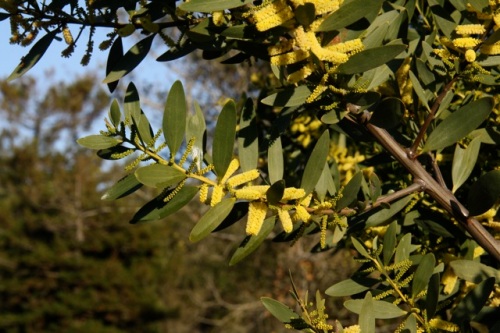 This small tree boasts little yellow bottle-brush flowers scattered among long, blade-shaped leaves. Sydney golden wattle (Acacia longifolia) is native to Australia, but has naturalized here in southern and central California. It is distinguished from many of the Acacias by having leaves that aren’t feathery or divided, and also by having long rod-shaped spikes of flowers, instead of puffy pom-pom-shaped balls.
This small tree boasts little yellow bottle-brush flowers scattered among long, blade-shaped leaves. Sydney golden wattle (Acacia longifolia) is native to Australia, but has naturalized here in southern and central California. It is distinguished from many of the Acacias by having leaves that aren’t feathery or divided, and also by having long rod-shaped spikes of flowers, instead of puffy pom-pom-shaped balls.
The golden wattle is a fast growing plant, and is used in Australia and other countries to stop erosion. This member of the Fabaceae family can fix nitrogen through a symbiotic relationship with bacteria that live in nodules in its roots. The flowers, seed and seed pot are all edible. The cooked flowers have a light fragrance and are used in fritters. Flowers also can be used to make a yellow dye, and the seed pods make a green dye.
None of the Acacias are native, and many are invasive here in California.











